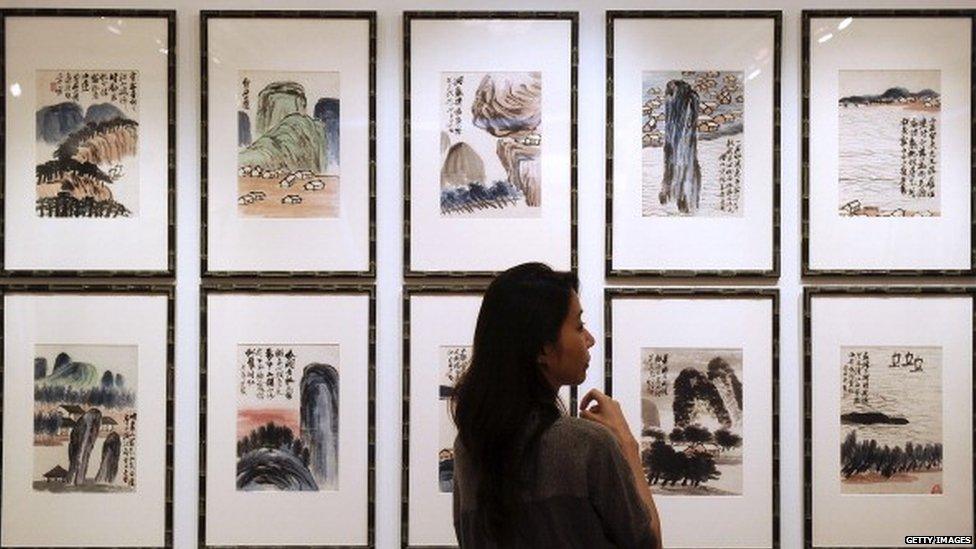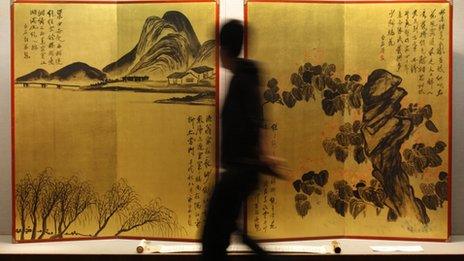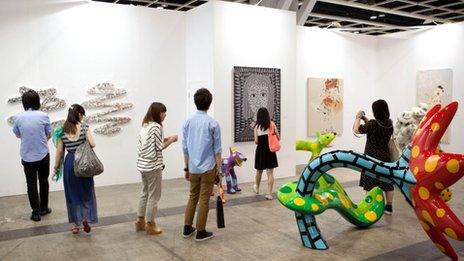China curator replaced stolen masters with forgeries
- Published

Works copied included those by Qi Baishi
A man in China has admitted stealing more than 140 paintings by Chinese masters from a university and replacing them with his own forgeries.
Xiao Yuan, 57, a curator at Guangzhou Academy of Fine Arts in southern China, sold 125 of the exhibits for more than 34m yuan (£4m, $6m).
In his defence, he told Guangzhou People's Intermediate Court there were already fakes in the storeroom when he started work there.
He will be sentenced later.
Xiao, who had a key to the university storeroom, substituted famous works by masters including Zhu Da, Qi Baishi and Zhang Daqian for two years from 2004.
He told the court that during this time he was surprised to find his own fakes were being stolen and replaced with yet more copies.

Xiao Yuan told the court he spotted fakes in the storeroom on his first day at work
"I realised someone else had replaced my paintings with their own because I could clearly discern that their works were terribly bad," he said.
He said he did not know who had replaced his fakes, but that students and professors could take out paintings in the same way as they could borrow library books.
Between 2004 and 2011 he sold 125 paintings, using the proceeds to buy property and other paintings.
The 18 others he stole are estimated to be worth more than 70m yuan, prosecutors said.
The stolen works included Rock and Birds by 17th-Century painter and calligrapher Zhu Da.
Xiao, who left the university in 2010 when allegations were taken to the police, pleaded guilty to a corruption charge.
He apologised but took issue with some of the details of the prosecution.
In 2012 Chinese news agency Xinhua reported that art forgery was "increasingly rampant" in the country.
That year it became the world's largest market for art and antiques, according to the European Fine Art Foundation.
- Published20 March 2012

- Published2 March 2012
